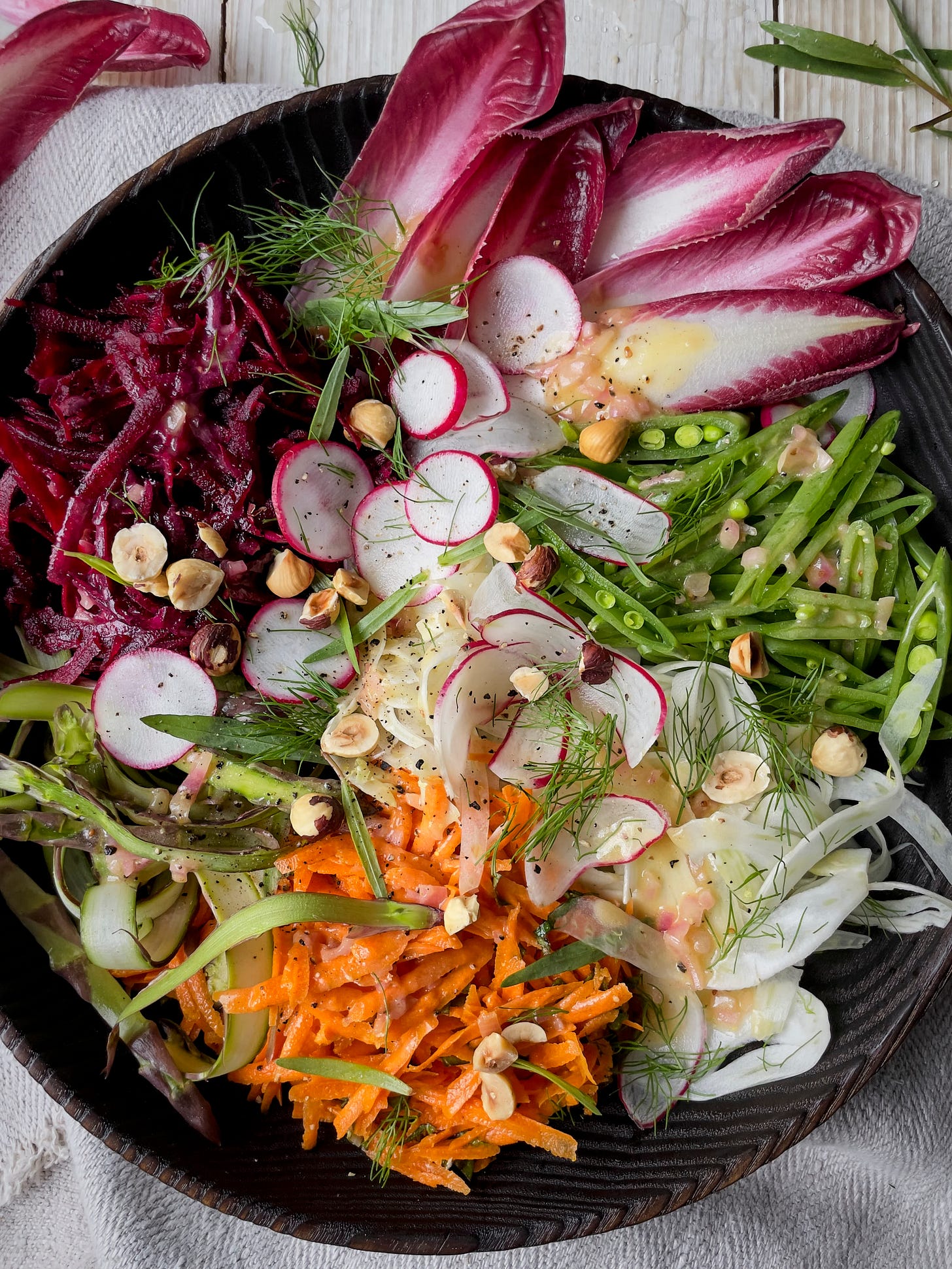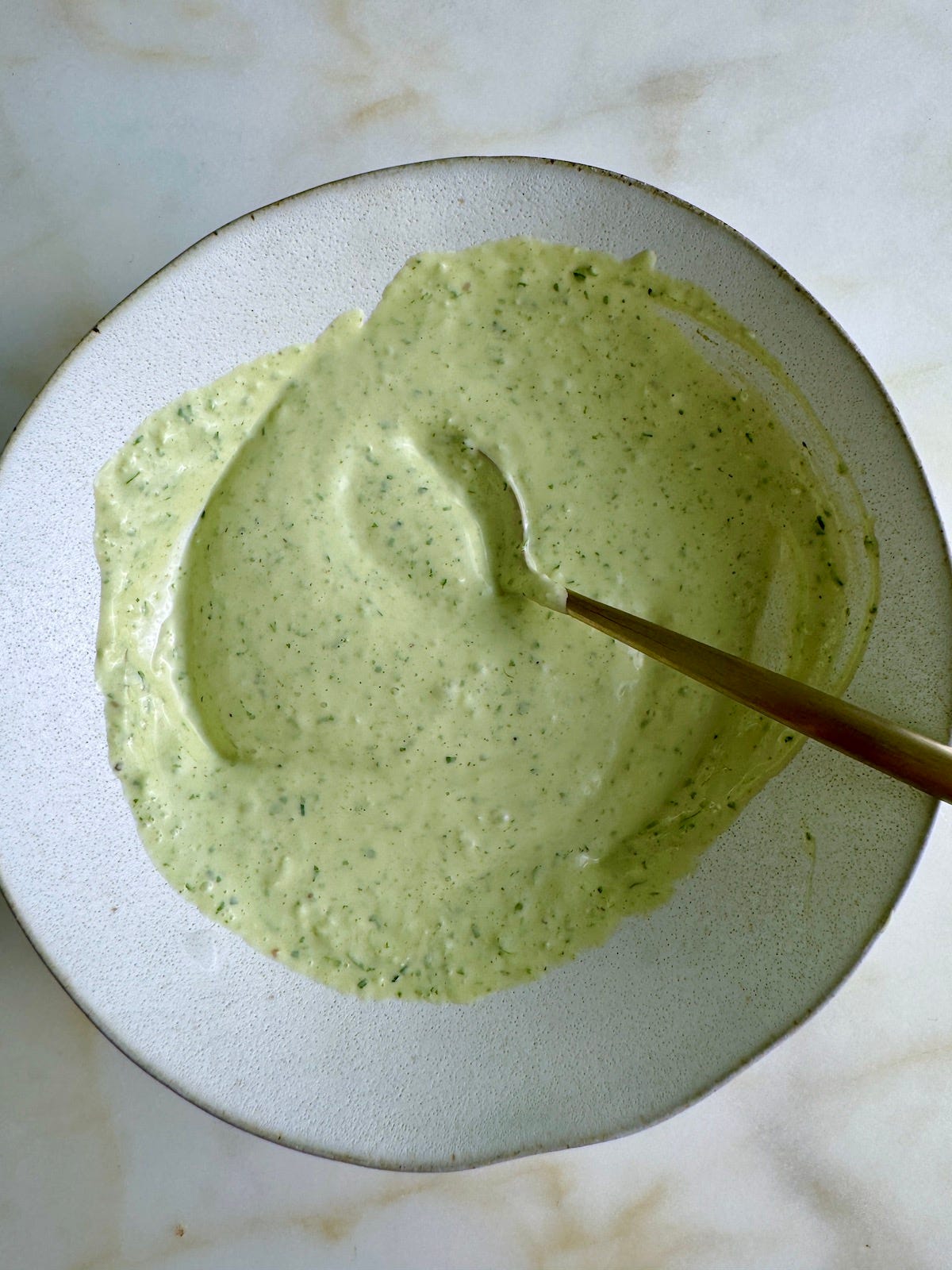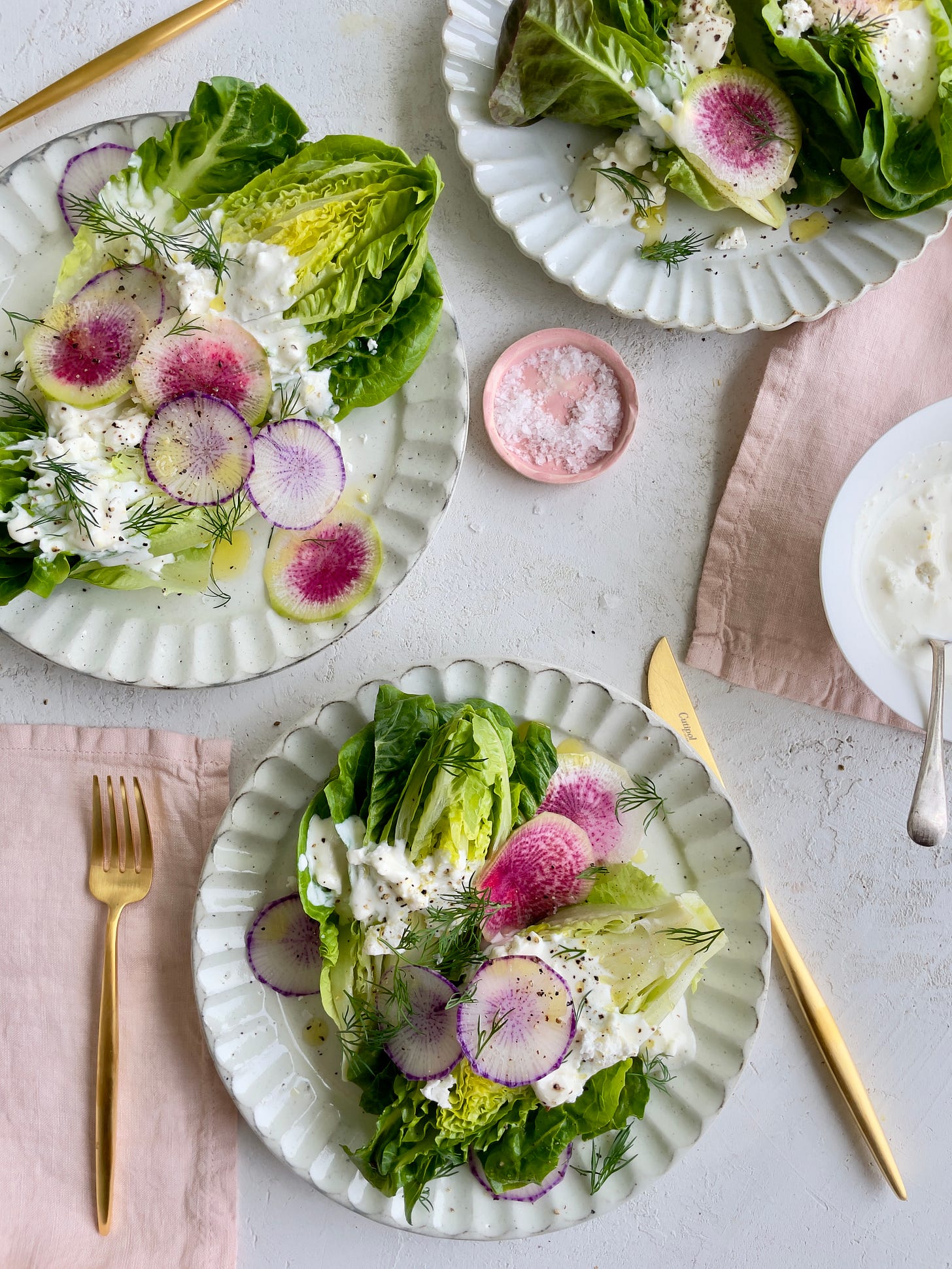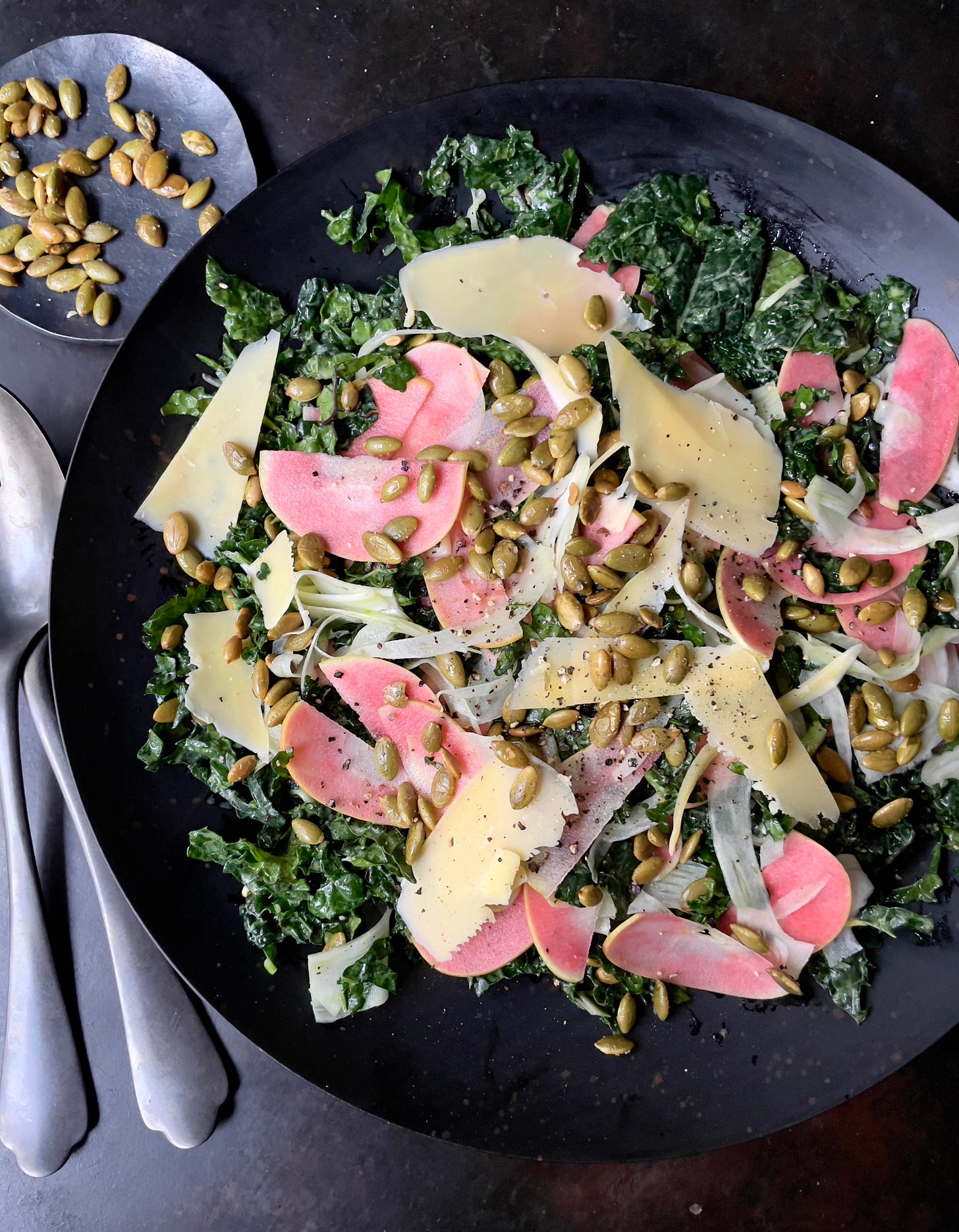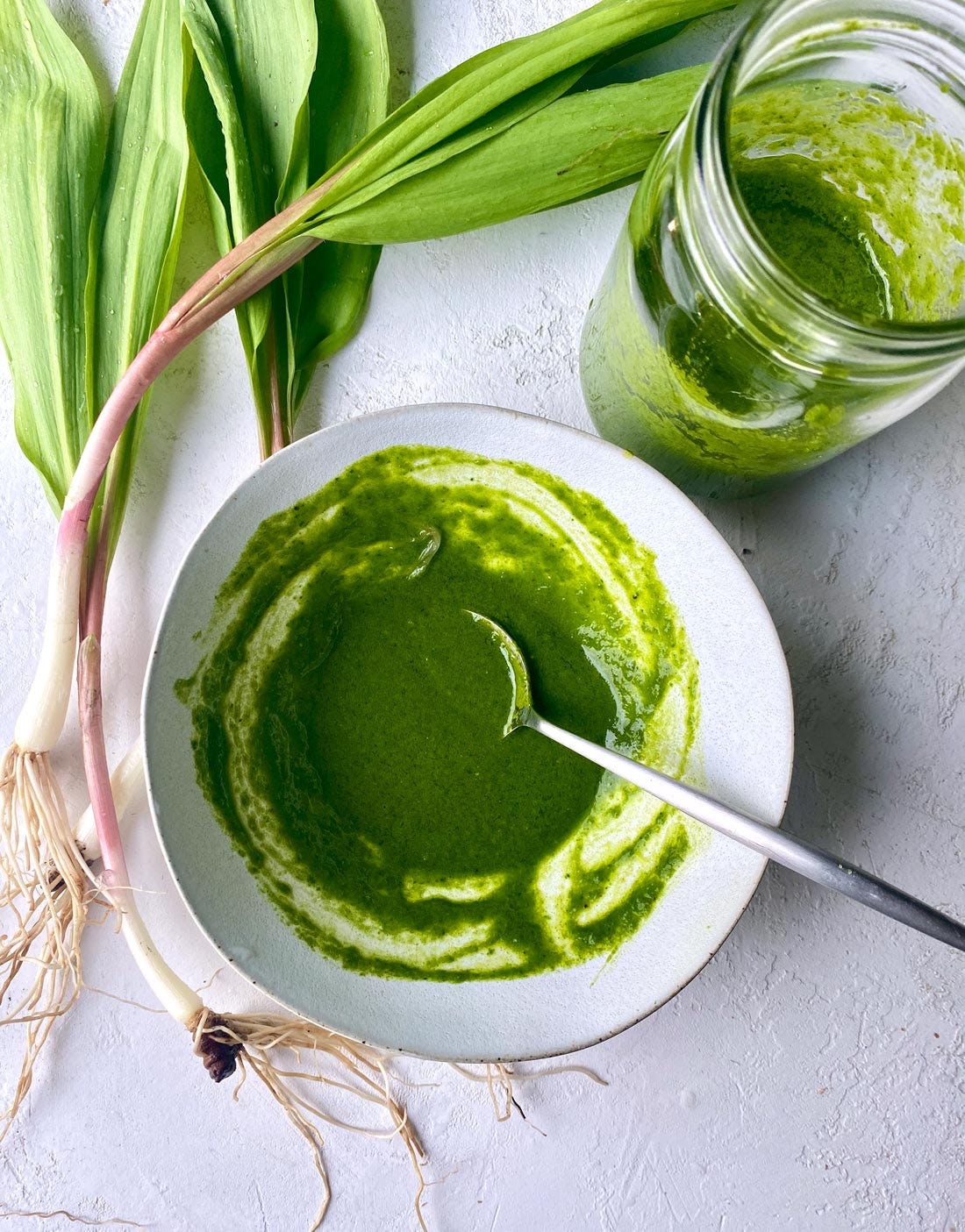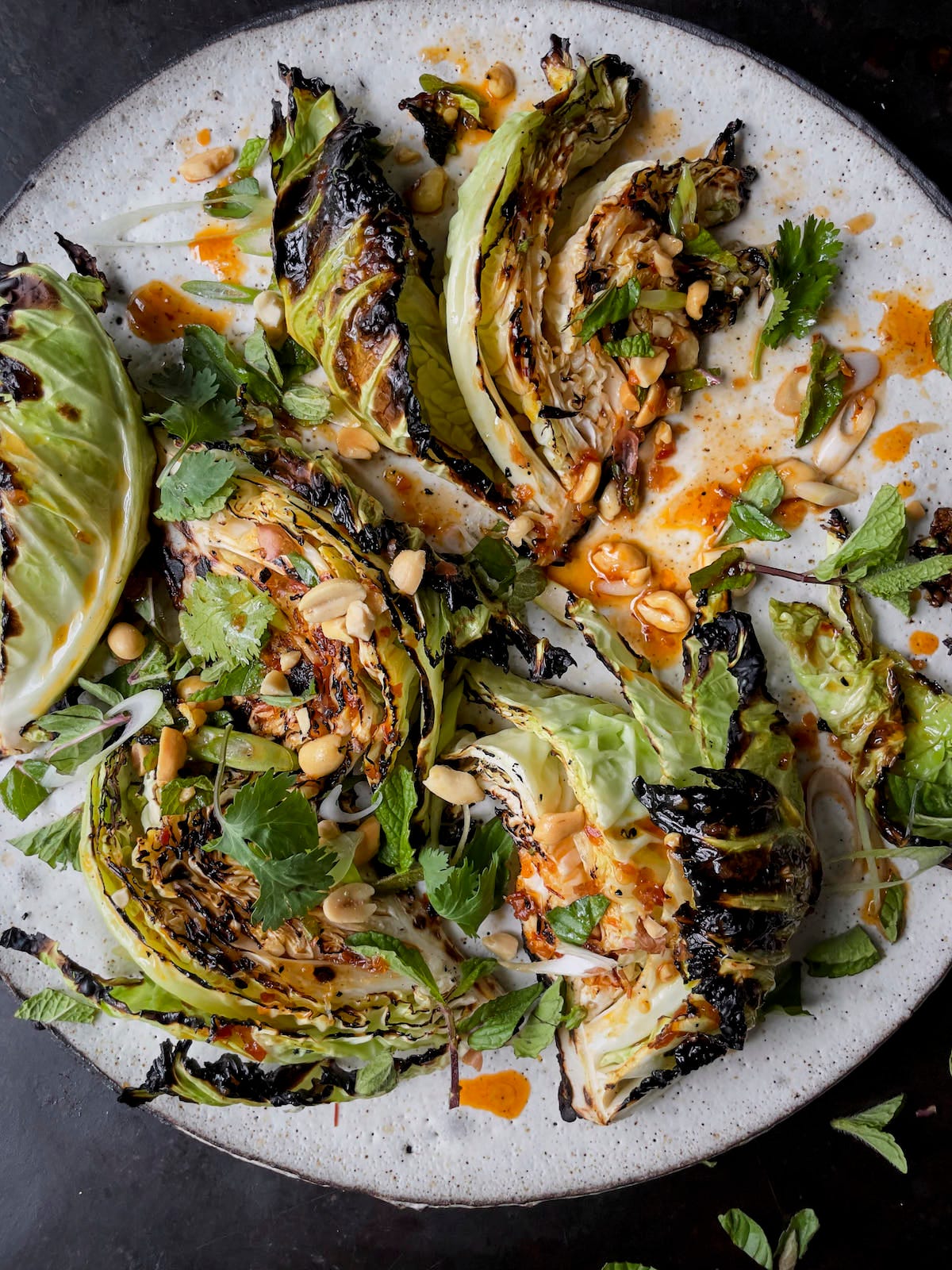My Best Dressed List
My most popular dressing recipes, plus a guide to making your own
It’s that time of year, when the summer produce is getting ready to roar into full ripeness, and “cooking” starts getting real easy. A platter of steamed veggies, salads (raw or cooked), with something grilled on the side, is plenty to sustain us once the weather warms up. But here in New York, summer has gotten off to a very slow start. I wore a down vest and carried an umbrella to the farmer’s market this morning, but I know that hot and steamy days are coming. And when that happens for you, wherever you live, you will want to be armed with an arsenal of dressings and sauces to dip into or drizzle onto all your market finds.
In today’s newsletter, I’m sharing some of my favorite dressings and a refresher course on concocting vinaigrettes of your own design. Read on for tips on ratios, different types of acids, oils, and add-ins.
The most important thing to think about when making a vinaigrette is: what’s the ratio?
Ratios are a key thing to understand when learning how to cook. I’ve turned to this book by Michael Ruhlman, aptly titled Ratio, many times while developing recipes. It’s super helpful to understand the basics that cooks and chefs have relied upon for hundreds of years. This little paperback is a very handy reference, and a good candidate for Kindle if that’s how you roll. There are no photos in this book, just information.
The classic ratio for a vinaigrette is 3:1 (3 parts oil to 1 part vinegar).
That’s what every chef and cooking school will tell you, and it’s a fine place to start, but there is some leeway there. I usually prefer a more acidic dressing, so I usually push the vinegar a little higher, often to 2:1. But so much depends on what I’m dressing, and what acid I’m using in my vinaigrette. For instance, this recipe for a citrus salad is dressed with an almost 1:1 ratio dressing. The citrus itself has so much flavor and mild acidity, I just used some citrus juice, a small amount of champagne vinegar, and some extra-virgin olive oil. I was after more of a “broken” vinaigrette that would separate into independent puddles on the plate and add just a bit of flavor.
Here are the basics you need to know to make a good vinaigrette:
First add the acid of your choice: Red wine vinegar, champagne vinegar, balsamic sherry vinegar, and/or lemon juice. I often use a combo of vinegar and lemon juice.
Add a spoonful of mustard, some finely minced shallot, a big pinch of salt, and freshly ground pepper. Let this hang out for a bit to soften the shallots and let the salt dissolve. You can also add a pinch of sugar or a dribble of maple syrup or honey at this point.
You can also add a crushed but whole clove of garlic now, to be removed later.
You can also add some anchovy paste or finely chopped anchovies now. It won’t taste like anchovies — it will just taste good!
Next, add the oil. For the best results, don’t use all extra-virgin olive oil. Add a little bit of neutral oil like grapeseed, peanut, or safflower oil. You can also use “pure” olive oil which is the milder, yellower kind. Add the extra-virgin olive oil (for a total of 2 to 3 times the volume of the vinegar) and shake the jar. If you're using a bowl and whisk, slowly whisk in the oil.
Finally, add any soft chopped herbs you may have on hand, like tarragon, parsley, basil, chives, or dill.
Don’t forget to taste it! If it’s too sharp, add something sweet like another pinch of sugar or some syrupy balsamic vinegar.
Change it up! To change the flavor and consistency of the dressing, consider adding any of these:
Try another oil for flavor, like dark sesame oil, walnut oil, hazelnut oil. You can use just a bit for flavor, and use a neutral oil for the balance.
Crème fraîche to add creaminess
Greek yogurt or sour cream
Tahini, sunflower or peanut butter
Miso
Roasted garlic (mashed)
A spoonful of mayo
Try These Delicious Dressings for Drizzling, Dipping, and Tossing
Green Goddess
Fresh tender herbs, such as parsley, basil, mint, dill, chives, and tarragon, bright acidic lemon, salty anchovies, and the punch of garlic make this dressing a powerful addition to summer salads. Almost any herb works here; use whatever you have in your garden or vegetable drawer. But however you tweak it, this dressing is endlessly excellent as a crudité dip, a sauce for grilled fish or chilled seafood, to make chicken salad, as a sandwich spread, mixed with canned tuna, and so on.
Buttermilk Feta Dressing
Buttermilk and feta are the basis for this dressing that’s creamy and a little rich with plenty of tanginess. Here, it’s paired with a salad of little gems, sliced radishes, and fresh dill, an ideal, crunchy vehicle. Lemon zest and juice, and a small clove of garlic give it an extra hit of acid and flavor that would be delicious on almost anything.
Miso Maple Dressing
White miso’s mild sweetness and slight saltiness make it a wonderful secret weapon in a salad dressing. In this recipe, it’s whisked into an earthy dressing with maple syrup, tahini, lemon juice, and microplaned garlic, resulting in a dressing that’s sturdy enough to stand up to the fibrous nature of kale salad. It would also be excellent drizzled on roasted vegetables or pork tenderloin.
The Greenest Vinaigrette
As the name implies, this dressing is a gorgeously deep shade of green, thanks to the green garlic and parsley that is its foundation. The season for green garlic and garlic scapes is short, however, so feel free to sub in a clove of garlic and a few scallions in their place. This is a pureed dressing that could serve as the flavoring for potato salad, slathered on a grilled piece of meat, or simply tossed into a crunchy salad of sliced summer veggies.
Spicy Thai-Inspired Dressing
The combination of lime juice, rice wine vinegar, brown sugar, and fish sauce is irresistibly umami. The addition of sriracha or chili garlic sauce further transforms it into a spicy, addictive dressing that is excellent on all manner of foods: grilled savoy cabbage, tossed with cold noodles and topped with crushed peanuts, or as the foundation of a crunchy slaw. Don't be afraid to use fish sauce here — it adds an essential flavor to the dressing that’s extremely well balanced.
Pickled Shallot Vinaigrette
Makes 1¼ cups


